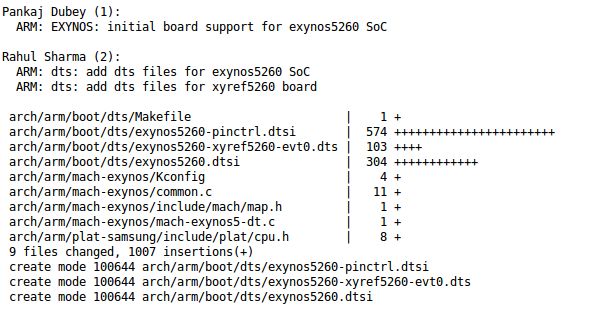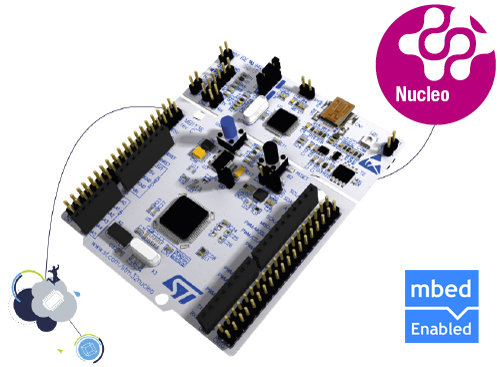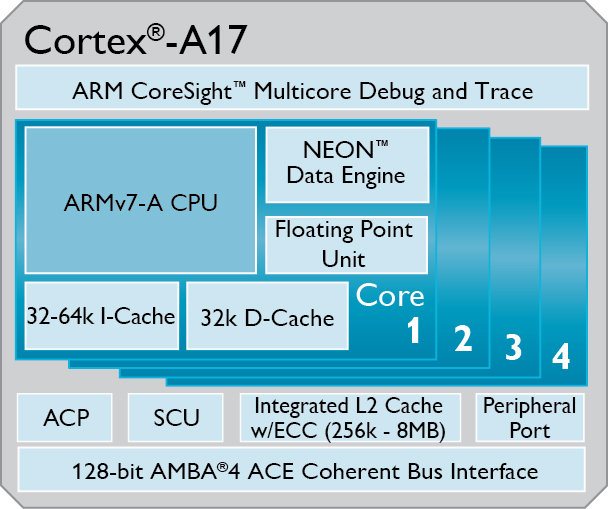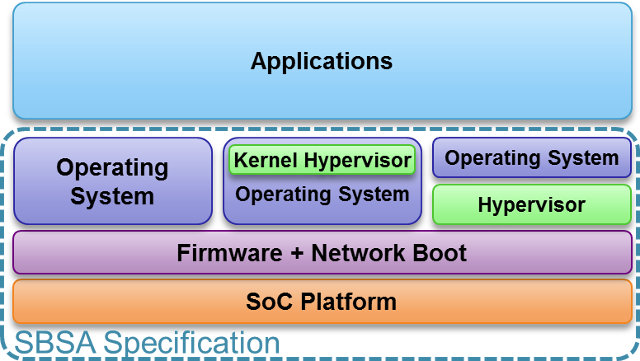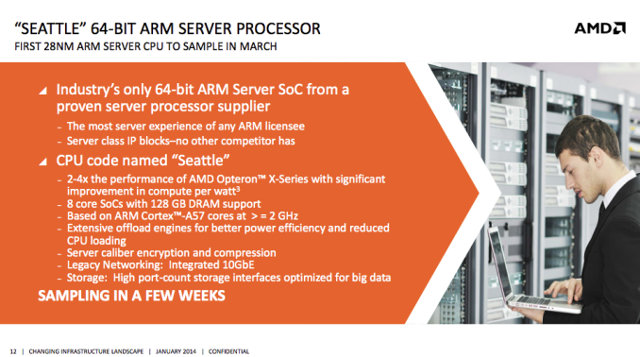Linaro Connect Asia 2014 has just started in Macau today and will take place until Friday. You can follow the sessions live and/or their recordings via Linaro OnAir YouTube Channel. I’ve watched the opening keynote, and embedded the video at the bottom of this post. The keynote focuses on ARMv8 for Linux and Android on servers, mobile devices, digital home, and more, and involves two main speakers: George Grey, Linaro CEO , and Jon Masters, Chief ARM Architecture at Red Hat. The speaker beginning of the video provides some practical information and the schedule for Linaro Connect. The keynote itself really starts around 15:50 with George Grey who spends the first 10 minutes introducing the latest Linaro members: Qualcomm, Mediatek, ZTE, AllWinner and Comcast. He then talks about the new Mobile sub-committee (MOBSCOM) that will focus on big.LITTLE, Android optimization and Android on ARMv8, as well as the soon-to-be-announced Linaro […]
ARM Interview about Cortex A17 Processor [Video]
When ARM announced their new Cortex A17 core, I could not quite understand why they would release another core with performance and features somewhat similar to Cortex A12 and Cortex A15. Charbax interviewed Nandan Nayampally, ARM VP of Processor Marketing, at Mobile World Congress 2014 and everything is much more clear now. Cortex A17 is based on A12, but adds support for big.LITTLE processing support with Cortex A7, and further improves performance. In some work loads Cortex A17 can currently match Cortex A15 performance, and by 2015, Cortex A17 will have performance similar to A15, and replace it in mid range devices as it has a lower footprint and lower cost. High-end products will switch to 64-Bit with Cortex A53 or A57 next year. The interviewee did not say this explicitly but it could be many companies will simply skip Cortex A12, and directly use Cortex A17, just like Rockchip […]
Samsung Exynos 5260 Hexa Core Cortex A15/A7 big.LITTLE Processor
Samsung has been teasing with “Exynos Infinity” before Mobile World Congress 2014, and many expect the Korean company to announce their 64-bit mobile processor (Exynos 6 ?). But it’s likely another Exynos SoC will (also) be announced, as a quick search shows recent patch submissions for Exynos 5260, which happens to be an hexa-core processor using two ARM Cortex A15 cores @ 1.7 GHz, and four ARM Cortex A7 cores @ 1.3 Ghz in big.LITTLE configuration supporting HMP (Heterogenous Multi Processing) / GTS (Global Task Scheduling). The official name might be something like Exynos 5 Hexa (5260). There’s also a device tree file for Samsung XYREF5260 EVT0 development board. It would probably be possible to go through the patches to find out more, but there’s an easier solution, and some blogs have already posted details about a leak showing Exynos 5260 used in the upcoming Galaxy Note3 Neo, where we learn […]
STMicro Unveils $10 mbed-enabled and Arduino Compatible Nucleo Development Boards
STMicro already announced a $24 NFC development kit a few days ago, and they’ve now announced new ultra low cost STM32 development boards. STMicro Nucleo development boards are based on different STM32 MCU based on ARM Cortex M0, M3 and M4, feature Arduino headers, and are supported by mbed platform. There are currently four boards available: NUCLEO-F401RE – Based on STM32F401RET6 ARM Cortex M4 MCU @ 84 MHz with 512KB flash memory, 96 KB SRAM NUCLEO-F030R8 – Based on STM32F030R8T6 ARM Cortex M0 MCU @ 48 MHz with 64KB flash memory, 8KB SRAM NUCLEO-F103RB – Based on STM32F103RBT6 ARM Cortex M3 MCU @ with 128KB flash memory, 20 KB SRAM NUCLEO-L152RE – Based on STM32L152RET6 ARM Cortex M3 MCU @ 32MHz with 512KB flash memory, 32KB SRAM All four boards share the following specifications: STM32 microcontroller with LQFP64 package Two types of extension resources Arduino Uno Revision 3 connectivity STMicroelectronics […]
ARM Unveils Cortex A17 Processor, First Used in Mediatek MT6595 and Rockchip RK3288 SoCs
Finally all these ARM Cortex A17 marketing materials for Rockchip RK3288 were not some typos, but Rockchip marketing team may just have not received the memo reading “Confidential”, as ARM has now officially announced Cortex A17 processor based on ARMv7-A architecture, with support for big.LITTLE with Cortex A7, and that can be coupled with Mali-T720 mid-range GPU and Mali-V500 VPU. After Cortex A15, and Cortex A12, you may wonder “Why? But Why did ARM had to launch yet another new core?”. Here’s the company answer to that question: The Cortex-A17 processor offers 60% performance uplift over the Cortex-A9 processor, the current leader in mid-range mobile market, and betters the best efficiency enabling optimized solutions to address existing and new products. The Cortex-A17 processor is based on the popular ARMv7-A architecture, today’s most successful architecture in the mobile market. With over 1M apps supporting the ARMv7-A architecture, the Cortex-A17 processor is […]
Cute Embedded Nonsense Hacks, Nouveau Driver for Tegra K1, and Android Defaults to ART
There’s been some news at the end of this week that may not warrant a full article, but are still fun and/or interesting nonetheless: comments by the lead developer of Fedora ARM led to “Cute Embedded Nonsense” meme on Google+, preliminary commit for open source drivers for Tegra K1’s GPU, and Android Open Source Project defaults to ART instead of Dalvik. If you have a Google+ account, and circled a few people involved in ARM Linux, you must have seen a few postings about “Cute Embedded Nonsense Hacks” in your feed. It all started when Jon Masters posted about Red Hat’s ARM SBSA platform requirements, and in particular one comment that reads: I am all for people installing their own kernels if they want to. I support aggressively defined standard platforms (not cute embedded nonsense hacks) but not locked platforms. You can keep both parts when it breaks, of course. […]
ARM Unveils Server Base System Architecture Specification (SBSA) to Standardize ARM based Servers
64-bit ARM based servers should hit the market later this year or earlier in 2015 with SoCs such as Applied Micro X-Gene or AMD Opteron A1100. ARM still has the lead in terms of efficiency with a lower dollar per watt ratio, but Intel is closing in with their new Avoton server-on-chips. However, there’s one aspect where Intel is clearly in the lead: standardization and compatibility. ARM is very flexible, and allow SoC designers to create more or less what they want, but it comes at the cost that most ARM based systems are not capable of running mainline Linux, and instead use vendor trees. With many applications, that may not be critical, but when it comes to data-centers, companies want to be able to run the latest Linux version with the latest security patches as soon as possible, and want to lower the total cost of ownership (TCO), so […]
AMD Opteron A1100 Server SoCs Feature 4 to 8 ARM Cortex A57 Cores
A few months ago, AMD published a roadmap showing AMD “Seattle” Server CPUs based on ARMv8 64-bit architecture were planned for H2 Q2014. The company has now announced the first series of processors that will be based on ARM Cortex A57: AMD Opteron A1100 Series, as well as the corresponding development platform at the Open Compute Project Summit in San Jose, California. Key features of AMD Opteron A1100 Series processors: 4 or 8 core ARM Corte-A57 processors Up to 4 MB of shared L2 and 8 MB of shared L3 cache Configurable dual DDR3 or DDR4 memory channels with ECC at up to 1866 MT/second Up to 4 SODIMM, UDIMM or RDIMMs 8x lanes of PCI-Express Gen 3 I/O 8x Serial ATA 3 ports 2x 10 Gigabit Ethernet ports ARM TrustZone technology for enhanced security Crypto and data compression co-processors On the software side, the company mentionned it is a […]




